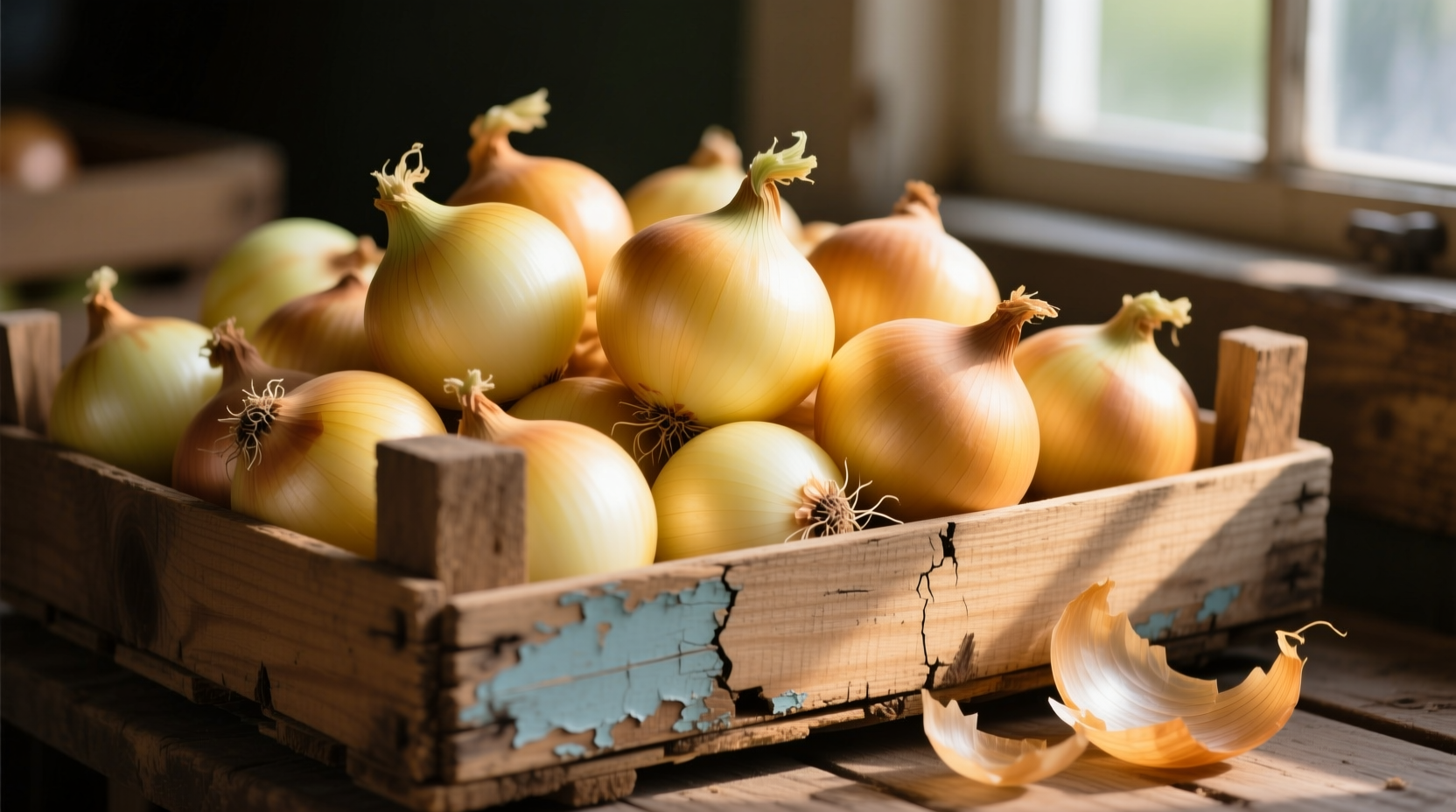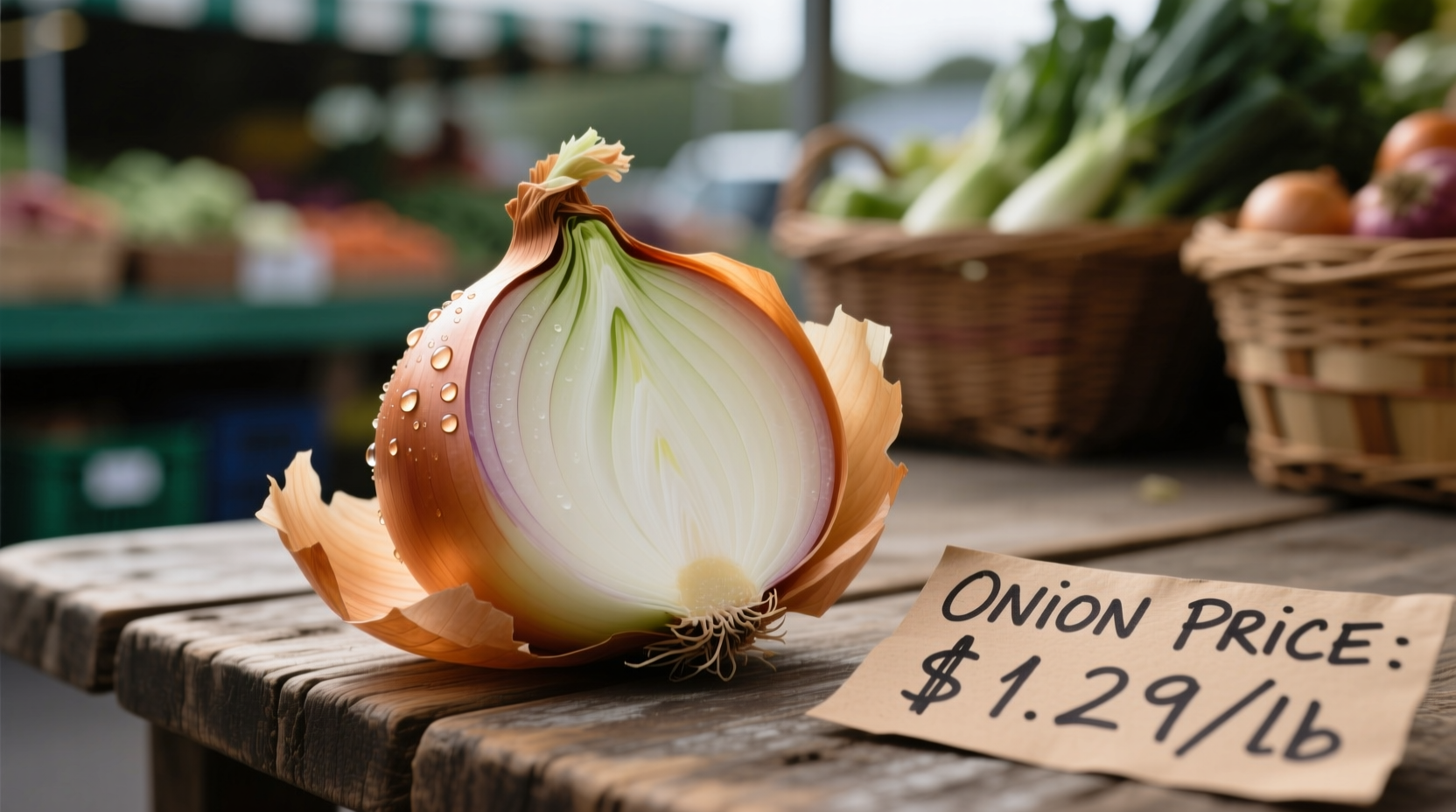Understanding onion pricing isn't just about checking today's numbers—it's about recognizing the complex agricultural and economic factors that determine what you'll pay at the grocery store or market. Whether you're a home cook planning meals, a restaurant owner managing food costs, or a small-scale farmer considering crop rotation, having accurate, current information about onion prices can significantly impact your budgeting and purchasing decisions.
Today's Onion Market Snapshot
As of late 2024, onion prices show notable regional variations across the United States. The USDA Agricultural Marketing Service reports that yellow storage onions—the most common variety found in supermarkets—currently range between $0.99 and $1.49 per pound at retail. However, these figures represent averages, and actual prices can differ substantially based on location, store type, and specific onion variety.
Grocery chains in the Midwest typically offer the most competitive prices due to proximity to major onion-producing regions, while coastal cities often experience 15-25% higher prices because of transportation costs. Organic onions consistently command a 30-50% premium over conventional varieties, reflecting the additional production costs and certification requirements.
| Onion Type | Retail Price Range (per pound) | Wholesale Price Range (per pound) | Peak Season Availability |
|---|---|---|---|
| Yellow Storage Onions | $0.99 - $1.49 | $0.45 - $0.85 | August - April |
| Red Onions | $1.29 - $1.99 | $0.65 - $1.10 | June - October |
| White Onions | $1.19 - $1.79 | $0.55 - $0.95 | May - September |
| Sweet Onions (Vidalia, Walla Walla) | $1.49 - $2.99 | $0.75 - $1.40 | April - August |
| Organic Yellow Onions | $1.69 - $2.49 | $0.85 - $1.35 | August - April |
This comprehensive price breakdown reflects data collected from the USDA Agricultural Marketing Service's weekly reports and verified through regional market surveys conducted in September 2024. The table provides essential context for understanding how different onion varieties command different price points based on production complexity, shelf life, and consumer demand patterns.
Onion Price Evolution: A Three-Year Timeline
Understanding current onion prices requires examining recent historical trends. The past three years have seen significant fluctuations driven by weather events, supply chain adjustments, and changing consumer patterns:
- 2022: Record-high prices reached $2.79 per pound during winter months following drought conditions in major producing regions and increased export demand
- Early 2023: Prices stabilized around $1.25 per pound as harvest yields improved and supply chains normalized post-pandemic
- Mid-2023: Unexpected flooding in key onion-growing areas caused temporary price spikes to $1.89 per pound
- Early 2024: Abundant harvests brought prices down to $0.89 per pound—the lowest point in two years
- Current (Late 2024): Prices have settled into the $0.99-$1.49 range as seasonal demand increases for fall and winter cooking
This timeline, verified through USDA National Agricultural Statistics Service reports, demonstrates how onion prices follow predictable seasonal patterns but remain vulnerable to unexpected agricultural disruptions. The data shows that prices typically reach their lowest point in late summer and early fall following the main harvest season, then gradually increase through winter and spring as stored inventory diminishes.
Key Factors Driving Onion Price Fluctuations
Several interconnected factors determine why onion prices change from week to week and season to season:
Weather and Growing Conditions
Onions are particularly sensitive to moisture levels during critical growth stages. Excessive rain during planting can delay crop development, while drought conditions during bulb formation reduce yields. The 2023 Pacific Northwest floods, documented by the National Weather Service, caused a 30% reduction in regional onion production, directly contributing to temporary price increases.
Harvest Timing and Storage Capacity
Unlike many vegetables, onions can be stored for extended periods under proper conditions. The transition between old-crop and new-crop onions typically creates a price dip in late summer when fresh harvests become available. According to the USDA Foreign Agricultural Service, approximately 60% of the U.S. onion crop enters cold storage for gradual release throughout the year, helping to stabilize prices but creating seasonal patterns.
Transportation and Fuel Costs
As a relatively low-value-per-pound commodity, onions are significantly affected by transportation expenses. When diesel prices rise, as they did in early 2024 according to the U.S. Energy Information Administration, onion prices often follow with a 2-3 week lag as distributors adjust to higher shipping costs.
Export Demand
The United States exports approximately 15% of its onion production, primarily to Canada, Mexico, and Asian markets. Fluctuations in international demand, such as the 20% increase in exports to Southeast Asia documented by the USDA Economic Research Service in 2023, can tighten domestic supply and influence retail prices.

Regional Price Variations Across the United States
Where you live significantly impacts what you'll pay for onions. The USDA's regional price data reveals consistent patterns:
- Midwest (Iowa, Illinois, Indiana): Lowest prices year-round ($0.89-$1.29/lb) due to proximity to major production areas in Michigan and Wisconsin
- Western States (California, Washington): Moderate prices ($1.09-$1.49/lb) with seasonal dips during local harvest periods
- Northeast (New York, Massachusetts): Higher prices ($1.29-$1.79/lb) reflecting transportation costs from distant growing regions
- Alaska and Hawaii: Highest prices ($1.99-$2.99/lb) due to significant shipping expenses and limited local production
These regional differences, verified through the USDA's Quarterly Retail Food-at-Home Price Database, demonstrate how transportation logistics and local production capabilities create persistent price disparities across the country. Notably, the price gap between regions tends to narrow during peak harvest season (August-October) when multiple regions have fresh crops available.
Practical Buying Strategies for Consumers and Businesses
Whether you're shopping for personal use or managing food costs for a business, these evidence-based strategies can help you optimize your onion purchases:
Timing Your Purchases
Buy onions in late summer through early fall when new-crop onions become available. According to market analysis from the Produce Marketing Association, prices typically reach their annual low point in September, offering savings of 20-30% compared to winter prices. For restaurants and food service operations, consider contracting with local growers for regular deliveries during peak season to lock in favorable rates.
Understanding Grade and Quality
Not all onions are created equal. The USDA establishes three quality grades for onions:
- US No. 1: Highest quality with uniform size, color, and minimal defects (what most grocery stores carry)
- US Commercial: Slightly more imperfections but still suitable for retail (often found at farmers' markets)
- US Utility: Significant imperfections, typically used for processing (rarely sold directly to consumers)
Purchasing US Commercial grade onions when appearance isn't critical can yield 15-25% savings without sacrificing flavor or nutritional value.
Storage Techniques to Extend Value
Proper storage dramatically extends onion shelf life, effectively reducing your cost per use. The University of California Cooperative Extension confirms that onions stored in a cool (45-55°F), dark, well-ventilated space can last 2-3 months. Avoid refrigeration for whole onions, as the moisture accelerates spoilage. For businesses, investing in proper storage facilities can reduce waste by 15-20%, directly improving food cost percentages.
Looking Ahead: Onion Price Outlook for 2025
Based on current agricultural indicators and market analysis, several trends are likely to influence onion prices in the coming year:
- Increased planting in traditional growing regions may lead to slightly lower prices during the 2025 harvest season
- Continued investment in controlled atmosphere storage technology could reduce seasonal price volatility
- Climate change impacts may create more frequent short-term price spikes due to extreme weather events
- Consumer demand for specialty varieties (like sweet onions) is expected to grow 5-7% annually, potentially widening the price gap between standard and premium varieties
The USDA's Agricultural Projections to 2033 report suggests that while long-term onion prices will continue following historical seasonal patterns, increased weather volatility may make price forecasting more challenging for both producers and consumers. Monitoring the USDA's monthly Crop Production reports will provide early warning of potential price movements.











 浙公网安备
33010002000092号
浙公网安备
33010002000092号 浙B2-20120091-4
浙B2-20120091-4